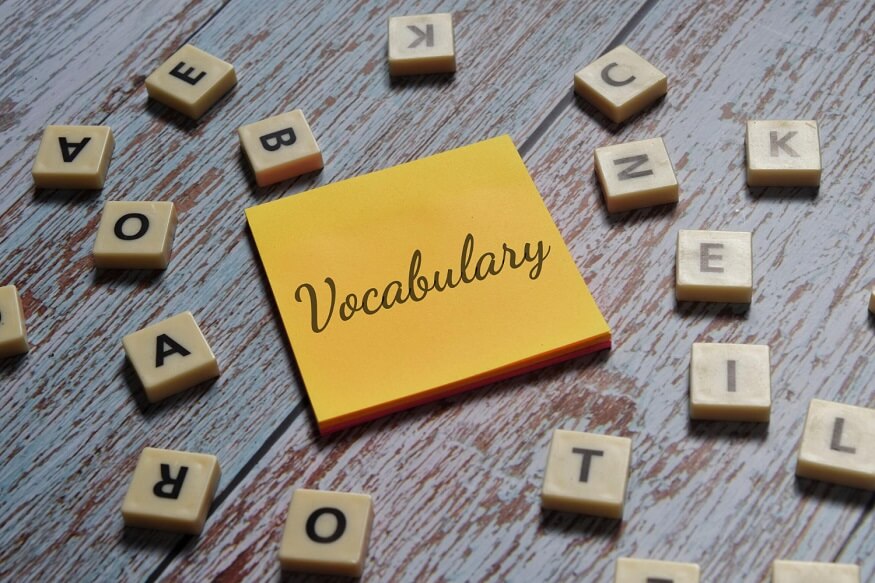Comprehension, communication, and expression are all made easier by the dynamic, multidimensional system that is language. Vocabulary is the stepping stone of language; it is a massive and complex arrangement of terms that enable us to show or communicate our feelings, ideas, and thoughts. Nonetheless, terms can be categorized into a variety of types as well as degrees based on their intricacy, importance, and use. This essay will examine the complexities of vocabulary, examining its different forms and the discrete levels that influence our language environment.
The Foundation: Basic Vocabulary
At the base of the vocabulary pyramid lies basic or foundational vocabulary. These are the words that make up the fundamental building blocks of language. Common terms that are used in daily speech and are usually among the first words that language learners learn are included in basic vocabulary. Basic vocabulary includes terms for ordinary items, colors, numbers, and simple actions.
The significance of basic vocabulary lies in its universality. Regardless of the language spoken, basic vocabulary provides a shared understanding among speakers. This tier is crucial for effective communication, especially in cross-cultural contexts where individuals may not share a common native language. Basic vocabulary serves as a bridge, allowing people to establish a foundational level of communication and comprehension.
Intermediate Vocabulary: Connecting Ideas
Moving up the tiers, we encounter intermediate vocabulary. These are words that go beyond the fundamental basics and are often used to express more complex ideas. Intermediate vocabulary includes words related to specific fields or topics, allowing individuals to communicate with a greater degree of precision. In this tier, words become more specialized, reflecting the diversity of human knowledge and experience.
Examples of words from an intermediate vocabulary in the scientific domain would be “photosynthesis” and “molecular structure.” Terms like “metaphor” and “symbolism” in literary debates would be regarded as intermediate vocabulary. This tier is essential for individuals who want to engage in deeper conversations about specific subjects or pursue expertise in a particular field.
Intermediate vocabulary also plays a crucial role in academic and professional settings. It enables individuals to articulate complex ideas, contribute to discussions, and engage with specialized literature. As individuals progress in their education and careers, the mastery of intermediate vocabulary becomes increasingly important for success in various fields.
Advanced Vocabulary: Precision and Nuance
Ascending to the upper tiers of vocabulary, we reach the realm of advanced language. Advanced vocabulary consists of words that are precise, nuanced, and often have multiple meanings. These words are typically less common in everyday speech but are frequently employed in formal writing, literature, and specialized domains.
The advanced vocabulary tier includes words that convey subtle distinctions in meaning, allowing individuals to express ideas with greater precision. For instance, instead of using a basic term like “angry,” one might opt for a more advanced synonym like “enraged” or “incensed” to convey a more specific emotional state. This tier demands a deep understanding of language and an appreciation for the subtleties of expression.
In addition to precision, advanced vocabulary contributes to the richness and eloquence of language. Writers, poets, and orators often turn to advanced vocabulary to create vivid imagery, evoke emotions, and engage their audience on a deeper intellectual level. While not everyone may use advanced vocabulary in their everyday speech, its mastery is a hallmark of linguistic proficiency and intellectual prowess.
The Role of Context:
Understanding vocabulary types and tiers is not solely about memorizing lists of words but also about grasping the nuances of contextual usage. A word that falls into the advanced vocabulary tier in one context may be considered intermediate or even basic in another. Contextual awareness is key to using vocabulary effectively and appropriately.
Consider the word “cell” as an example. In a basic context, it might refer to a small room or a basic unit of a living organism. In an intermediate context, it could relate to a biological cell or a small group of people. In an advanced context, “cell” might be used in the realm of physics to denote a unit in a crystal lattice. The same word traverses different tiers based on the context in which it is employed.
The Dynamic Nature of Vocabulary:
Vocabulary is not a static entity but a dynamic and evolving system. New words enter the lexicon as society, technology, and culture progress. For instance, a plethora of new terms and expressions that are not part of conventional language levels have emerged with the introduction of the Internet. Words like “meme,” “vlog,” and “hashtag” are now often used in conversation, demonstrating how language is always evolving.
Moreover, changes in culture, world events, and ideas shared throughout groups all have an impact on language. As a result, vocabulary is continuously expanding to accommodate emerging concepts and phenomena. This dynamic aspect of language underscores the importance of remaining adaptable and open to the evolution of vocabulary across different tiers.
Vocabulary Acquisition and Learning Strategies:
Given the diverse tiers of vocabulary, effective language learners employ various strategies to acquire and master words at different levels. Here are some key strategies for vocabulary acquisition:
- Contextual Learning:
- Word Mapping:
- Mnemonics:
- Regular Practice:
- Utilizing Technology:
- Cultural Immersion:
- Progressive Exposure:
Exposure to words in meaningful contexts enhances understanding and retention. Reading books, articles, and other texts exposes learners to words in their natural usage, helping them grasp the subtleties of meaning.
Creating word maps or diagrams that illustrate the relationships between words can aid in memorization. This visual representation helps learners connect words based on similarities, differences, or thematic associations.
Mnemonic devices, such as acronyms or memory aids, can be effective for remembering challenging words. Associating a word with a vivid image or a memorable phrase enhances recall.
Consistent practice is crucial for vocabulary development. Flashcards, quizzes, and word games provide interactive and engaging ways to reinforce learning and retention.
Language learning apps, online resources, and interactive platforms offer diverse and dynamic ways to learn and practice vocabulary. These tools often incorporate gamified elements to make the learning process more enjoyable.
Engaging with authentic cultural materials, such as movies, music, and conversations with native speakers, exposes learners to colloquial expressions and idiomatic usage, contributing to a more comprehensive understanding of vocabulary.
Gradually exposing oneself to words at different tiers allows for a systematic and manageable approach to vocabulary acquisition. Starting with basic vocabulary and progressively moving to intermediate and advanced levels aligns with natural language development.
Understanding vocabulary types and their distinct tiers is a journey that spans the breadth and depth of language. From the basic building blocks that facilitate everyday communication to the nuanced and precise words that adorn literary masterpieces, vocabulary is a multifaceted tool that reflects the richness of human expression.
As language learners and enthusiasts, we navigate this linguistic landscape, scaling the tiers of vocabulary to communicate effectively, think critically, and engage meaningfully with the world. We are encouraged to consent to the way words are evolving and adjust our language use to the ever-changing societal as well as cultural currents since vocabulary is dynamic.
In actuality, vocabulary is more than merely a collection of phrases; it is proof of human creativity as well as c ommunication skills. As we explore an array of vocabulary types and tiers, we embark on a fascinating journey into the fundamentals of language, discovering how words can shape our opinions, help us connect with others, as well as illuminate the complex web of human experience.
For more such interesting blogs, Visit EuroKids











